RIGHTS TITLES

2023
SPRING |
CONTENTS History 3 Literature 13 Music 14 Philosophy 15 Politics 18 Psychology 21 Sociology 26 Environmental Science 27 Technology 30 Engineering 31 Astronomy 33 Mathematics 34 Statistics 35 Medicine 36
November 2022
229 x 152 mm c.300pp


978-1-108-83065-2 Hardback £69.99 / US$89.99
HISTORY
SUN TZU IN THE WEST
The Anglo-American Art of War
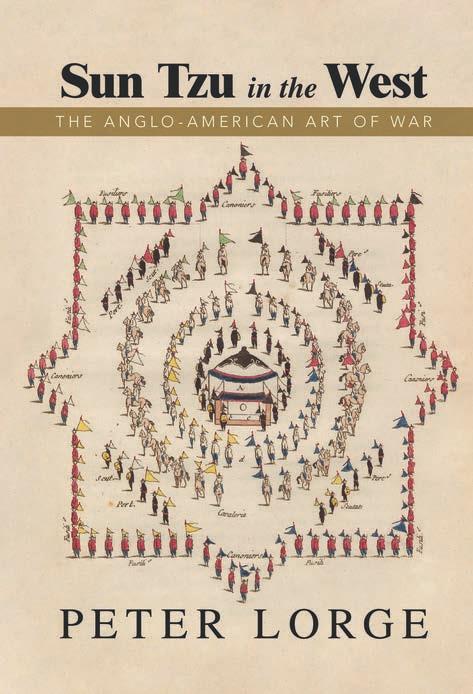 Peter Lorge Vanderbilt University, Tennessee
Peter Lorge Vanderbilt University, Tennessee
It would be hard to overstate the impact of Sun Tzu’s The Art of War on military thought. Beyond its impact in Asia, the work has been required reading in translation for US military personnel since the Cold War. Sun Tzu has been interpreted as arguing for ‘Indirect Strategy’ in contrast to ‘Direct Strategy,’ the latter idea stemming from Ancient Greece. This is a product of twentiethcentury Western thinking, specifically that of Liddell Hart, who influenced Samuel B. Griffith’s 1963 translation of Sun Tzu. The credibility of Griffith’s translation was enhanced by his combat experience in the Pacific during World War II, and his translation of Mao Zedong’s On Guerrilla War. This reading of Sun Tzu is, however, very different from Chinese interpretations. Western strategic thinkers have used Sun Tzu as a foil or facilitator for their own thinking, inadvertently engaging the Western military tradition and propagating misleading generalizations about Chinese warfare.
KEY FEATURES
• Provides an overview of the place of Sun Tzu’s Art of War in Chinese history and culture
• Shows that Sunzi has been used as a symbol of strategy, and has no recoverable ‘true’ meaning
• For military history/strategy enthusiasts, as well as historians and scholars interested in China
CONTENTS
Acknowledgments; List of images; Introduction; 1. A brief history of Sunzi in China; 2. Journey to the West; 3. The armchair captain; 4. Stilwell, Chiang Kai-Shek and World War II; 5. The China Marines; 6. The captain who taught a general; 7. ‘The concentrated essence of wisdom on the conduct of war’; 8. The reaction to Griffith’s Sunzi translation; 9. Robert Asprey, John Boyd and Sunzi; Conclusion; Bibliography; Index.
ADDITIONAL INFORMATION
Level: Graduate students, amateurs/enthusiasts
www.cambridge.org/rights
rights@cambridge.org
RUNNING HEAD
3
April 2023
229 x 152 mm c.300pp
978-1-108-48970-6 Hardback
£85.00 / US$110.00
JAPAN’S OCEAN BORDERLANDS
Nature and Sovereignty
Paul Kreitman
Columbia University, New York
Desert islands are the focus of intense geopolitical tensions in East Asia today, but they are also sites of nature conservation. In this global environmental history, Paul Kreitman shows how the politics of conservation have entangled with the politics of sovereignty since the emergence of the modern Japanese state in the mid-nineteenth century. Using case studies ranging from Hawai‘i to the Bonin Islands to the Senkaku (Ch: Diaoyu) Isles to the South China Sea, he explores how bird islands on the distant margins of the Japanese archipelago and beyond transformed from sites of resource extraction to outposts of empire and from wartime battlegrounds to nature reserves. This study examines how interactions between birds, bird products, bureaucrats, speculators, sailors, soldiers, scientists and conservationists shaped ongoing claims to sovereignty over oceanic spaces. It considers what the history of desert islands shows us about imperial and post-imperial power, the web of political, economic and ecological connections between islands and oceans, and about the relationship between sovereignty, territory and environment in the modern world.
WHY IT WILL SELL
KEY FEATURES
• Emphasizes connections and parallels between Japanese, Pacific and East Asian history on a human and global scale
• Destabilizes conventional periodizations of Japanese history, and undermines the conventional binary between imperial and nation states
• For readers of Japanese, Pacific, oceanic and environmental history
www.cambridge.org/rights
rights@cambridge.org
CONTENTS
Maps; List of Figures; Acknowledgements; Naming Conventions; Introduction;
1. Bonins of Contention: Extraterritorial Empire and Borderland Citizenship in the 19th Century Pacific; 2. The Race to Marcus Island: Commodities and Colonisation in the North Pacific, 1885–1902; 3. Bird and Sovereignty Conservation in the Northwest Hawaiian Islands, 1898–1911; 4. Sand Dunes and Soldiers: From Phosphate Mining to National Defence (1902–1939); 5. Disaster: The Abandonment of Japan’s Remote Islands, 1902–1945;
6. Resurrecting the Torishima Albatross: Wild Birds and Sovereignty in Postwar Japan;
7. The Nature of the Senkaku Islands: Biodiversity Conservation in Okinawa, 1945–2013; Epilogue: Islands and Oceans; Appendix: Japanese islands abandoned, 1868-2013; Select Bibliography; Index.
ADDITIONAL INFORMATION
Level: Academic researchers, graduate students Series: Cambridge Oceanic Histories



RUNNING HEAD
4
HISTORY
April 2023
229 x 152 mm 336pp

25 b/w illus. 10 maps
978-1-00-928281-9 Hardback
£25.00 / US$29.95
HITLER’S PANZER GENERALS
Guderian, Hoepner, Reinhardt and Schmidt Unguarded
David Stahel

University of New South Wales, Canberra
Germany’s success in the Second World War was built upon its tank forces; however, many of its leading generals, with the notable exception of Heinz Guderian, are largely unknown. This biographical study of four German panzer army commanders serving on the Eastern Front is based upon their unpublished wartime letters to their wives. David Stahel offers a complete picture of the men conducting Hitler’s war in the East, with an emphasis on the private fears and public pressures they operated under. He also illuminates their response to the criminal dimension of the war as well as their role as leading military commanders conducting large-scale operations. While the focus is on four of Germany’s most important panzer generals –Guderian, Hoepner, Reinhardt and Schmidt – the evidence from their private correspondence sheds new light on the broader institutional norms and cultural ethos of the Wehrmacht’s Panzertruppe.
KEY FEATURES
WHY IT WILL SELL
• Reveals the inner lives of four of Germany’s key panzer commanders on the Eastern Front through their intimate letters

• Provides a deeper insight into the generals and the role they played in the Barbarossa campaign and in German criminality in the east
• Sheds new light on the wider culture within the Panzertruppe
CONTENTS
Introduction; 1. The letters of the Panzer generals: validity, veracity and verification;
2. The private generals: embracing family and war; body, mind and soul; Burdens of the heart; Burdens of command; 3. The public generals: military celebrity; Charm offensives; Status symbols; The power of privilege; 4. The criminal generals: enemy in the East; Criminal orders; The war behind the front; War of annihilation; 5. The military generals: Delusion and disclosure; Discord and dysfunction; Operational silences; Narcissistic command; Conclusion; Bibliography; Index.
ADDITIONAL INFORMATION
Level: General readers, academic researchers
www.cambridge.org/rights
rights@cambridge.org
RUNNING HEAD
5
HISTORY
Spanishrights sold
PEACEMAKING AND INTERNATIONAL ORDER AFTER THE FIRST WORLD WAR
 Peter Jackson, University of Glasgow
Peter Jackson, University of Glasgow

 William Mulligan, University College Dublin
Glenda Sluga, European University Institute, Florence
William Mulligan, University College Dublin
Glenda Sluga, European University Institute, Florence
The Paris peace settlements following the First World War remain amongst the most controversial treaties in history. Bringing together leading international historians, this volume assesses the extent to which a new international order, combining old and new political forms, emerged from the peace negotiations and settlements after 1918. Taking account of new historiographical perspectives and methodological approaches to the study of peacemaking after the First World War, it views the peace negotiations and settlements after 1918 as a site of remarkable innovations in the practice of international politics. The contributors address how a wide range of actors set out new ways of thinking about international order, established innovative institutions, and revolutionised the conduct of international relations. They illustrate the ways in which these innovations were merged with existing practices, institutions, and concepts to shape the international order that emerged out of the Paris Peace Conference of 1919.
KEY FEATURES
WHY IT WILL SELL

• Examines the place of the Paris peace settlements in longerterm histories of international orders
• Makes accessible the latest research on topics of emerging interest and bring these studies together in a single volume
• The volume will appeal to scholars of international history, international law and international relations and the history of the First World War
CONTENTS
1. Introduction; Part I. Ordering Concepts: 2. Vocabularies of self-determination in 1919: the co-constitution of race and gender in international law; 3. Recasting the ‘fabric of civilization’: the Paris Peace Settlement and international law; 4. State sovereignty; 5. The crisis of power politics; 6. The challenge of an absent peace in the French and British Empires after 1919; Part II. Institutions: 7. A ‘new diplomacy’?: the Big Four and peacemaking, 1919; 8. The League of Nations: the creation and legitimisation of international civil service; 9. The enforcement of German disarmament and the international order of the 1920s; 10. Planning for international financial order: the call for collective responsibility at the Paris Peace Conference; 11. Raw materials and international order from the Great War to the crisis of 1920–1921; Part III. Actors and Networks: 12. The Great Conversation: a discussion on peace after the First World War; 13. An alternative international relations: socialists, socialist internationalism and the postwar order; 14. The Paris Peace Conference and the origins of global feminism; 15. Colonial nationalists and the making of a new international order; Part IV. Counterpoint: 16. The persistence of old diplomacy: the Paris Peace Settlement in perspective; Afterword: new histories of international order.
ADDITIONAL INFORMATION
Level: Academic researchers, graduate students
www.cambridge.org/rights
rights@cambridge.org
RUNNING HEAD
6
c.300pp 978-1-108-83050-8 Hardback £90.00 / US$120.00 HISTORY
February 2023 229 x 152 mm
June 2023

216 x 138 mm 250pp 978-1-00-927684-9 Hardback £18.99 / US$24.95
BROODING OVER BLOODY REVENGE
Enslaved Women’s Lethal Resistance
 Nikki M. Taylor Howard University, Washington DC
Nikki M. Taylor Howard University, Washington DC
From the colonial through the antebellum era, enslaved women in the US used lethal force as the ultimate form of resistance. By amplifying their voices and experiences, Brooding over Bloody Revenge strongly challenges assumptions that enslaved women only participated in covert, non-violent forms of resistance, when in fact they consistently seized justice for themselves and organized toward revolt. Nikki M. Taylor expertly reveals how women killed for deeply personal instances of injustice committed by their owners. The stories presented, which span centuries and legal contexts, demonstrate that these acts of lethal force were carefully pre-meditated. Enslaved women planned how and when their enslavers would die, what weapons and accomplices were necessary, and how to evade capture in the aftermath. Original and compelling, Brooding Over Bloody Revenge presents a window into the lives and philosophies of enslaved women who had their own ideas about justice and how to achieve it.
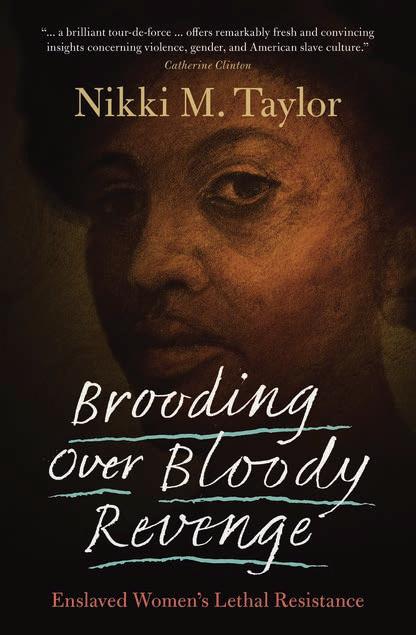
KEY FEATURES
WHY IT WILL SELL
• Challenges assumptions that enslaved women only participated in covert, nonviolent forms of resistance
• Details the complex lives of enslaved women through case studies that span the colonial through the antebellum era
• Delves into each case study to illustrate the shared plight across time
• Illuminates how enslaved women were highly organized and responded consistently and powerfully to acts of injustice
• Contests much of the literature on slavery by detailing graphic violence committed by black women toward white enslavers
www.cambridge.org/rights
rights@cambridge.org
CONTENTS
Introduction; 1. Phillis
ADDITIONAL INFORMATION
Level: General readers, undergraduate students, graduate students
RUNNING HEAD
7
HISTORY
and Phoebe; 2. Annis, Phillis, and Lucy; 3. Cloe; 4. Rose Butler; 5. Jane Williams; 6. Nelly, Betsy, and Ellen; 7. Lucy; Conclusion.
October 2022
229 x 152 mm c.75pp
978-1-108-93089-5 Paperback
£17.00 / US$22.00
EPIDEMIC CITIES
Antonio Carbone German Historical Institute
Epidemic Cities provides an overview of the history of epidemics through a particular focus on a range of cities in different regions of the world. The dual focus on both epidemics and specific cities provides an unusual perspective on global history: the analysis of globally circulating epidemics enables reconstructing a variety of wide-reaching entanglements, on the one hand. On the other hand, the concentration with specific urban settings highlights differences and the unevenness engendered by global entanglements. After an introduction concerning the history of the relationship between medicine, epidemics, and cities, the book focuses on the history of three epidemic diseases and how they affected Paris, Buenos Aires, Hong Kong, Bombay, and Baltimore. The timings of major pandemics punctuate the structure of the book: cholera pandemics from the 1830s to the late nineteenth century, bubonic plague at the turn of the twentieth century, and finally tuberculosis until the mid-twentieth century.

www.cambridge.org/rights
rights@cambridge.org
CONTENTS
Introduction; 1. Epidemics, medicine, and cities; 2. Cholera; 3. Plague; 4. Tuberculosis; Conclusion. .
ADDITIONAL INFORMATION
Level: Academic researchers, graduate students
Series: Elements in Global Urban History



RUNNING HEAD
8
HISTORY
December 2022
216 x 140 mm 396pp


978-0-521-12737-0 Paperback
£22.99 / US$29.99
A CONCISE HISTORY OF BELGIUM Guy Vanthemsche
Vrije Universiteit Brussel
Roger De Peuter
Vrije Universiteit Brussel, Emeritus
The small and densely populated nation of Belgium has played an important role in the history of Europe and other continents, especially Africa. It was a pioneering force in industry, trade, and finance during the Middle Ages, through early modern times and into the nineteenth and twentieth centuries. It introduced innovative political regimes and played a leading role in the creative arts. Yet this rich past is not widely known. This introductory history offers an accessible and rigorous overview of this small but important WestEuropean country, synthesizing Belgium’s main economic, social, political, and cultural developments from pre-Roman times until today. Today, this nation-state, born in 1830, is well-known for the rivalries between its two main language communities, and as a result is often considered a fragile or even an artificial political construct. This systematic chronological analysis of both present-day Belgium and the polities that preceded it throws fresh light on this controversial issue and demonstrates Belgium’s enduring importance and influence.
CONTENTS
KEY FEATURES
WHY IT WILL SELL
• Gives a complete overview of Belgian history, from ancient times to the present
• Explores a wide range of aspects of Belgian history, including economic, social, political, and cultural developments

• Offers an interpretative framework of Belgium’s history while also remaining fully accessible to a general readership
1. Earliest times – From prehistory to the end of the Roman Period; 2. The era of the Frankish kingdoms (fifth–tenth century); 3. The origins of the medieval principalities (tenth–fourteenth century); 4. Unifying the Netherlands: The Burgundy – Habsburg period (1384–1555); 5. The Spanish Netherlands (1555-ca. 1700); 6. The Austrian Netherlands (ca. 1700–1780); 7. The formation of a new nation-state (1780s–1830); 8. The consolidation of a Bourgeois regime (1831–1880s); 9. The Belgian nation-state at its height (1880s–1945); 10. The metamorphoses of a nation-state (from 1945 to the present day); Index.
ADDITIONAL INFORMATION
Level: General readers, undergraduate students Series: Cambridge Concise Histories
www.cambridge.org/rights
rights@cambridge.org
RUNNING HEAD
9
HISTORY
THE ARMENIANS AND THE FALL OF THE OTTOMAN EMPIRE
After Genocide, 1918–1923
Ari Şekeryan
University of Michigan, Ann Arbor
The Armistice of Mudros was signed on 30 October 1918 and on the morning of 13 November 1918, a mighty fleet of battleships from Britain, France, Italy and Greece sailed to Istanbul, and dropped anchor without encountering resistance. This day marked the beginning of the end of the Ottoman Empire, a dissolution that would bring great suffering and chaos, but also new opportunities for all Ottomans, Muslim and non-Muslim alike. Drawing upon a previously untouched collection of Armenian and Ottoman Turkish primary sources, Ari Şekeryan considers these understudied post-war years. Examining the Armenian community as they emerged from the aftermath of war and genocide, Şekeryan outlines their shifting political position and the strategies they used to survive this turbulent period. By focusing on the Ottoman Armistice (1918–1923), Şekeryan illuminates an oft-neglected period in history, and develops a new case study for understanding the political reactions of ethnic groups to the fall of empires and nation-states.
KEY FEATURES
WHY IT WILL SELL


• Examines the understudied post-war period in Ottoman historiography, drawing attention to the peculiarities of the Ottoman Armistice and the post-genocide Armenian community
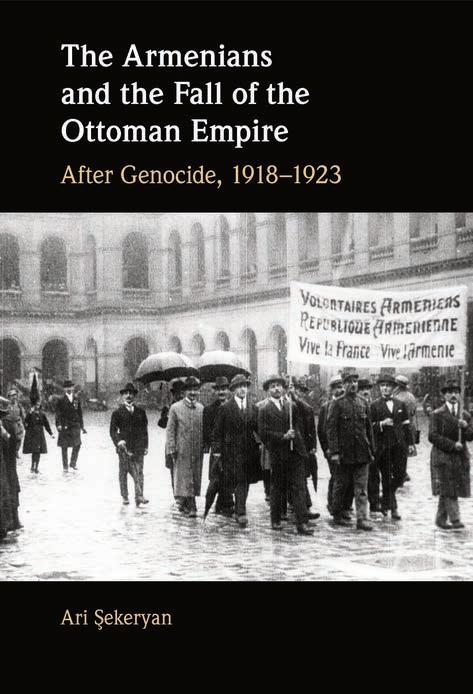
• Uses both Armenian and Ottoman Turkish sources, expanding upon existing scholarship and offering readers a nuanced perspective
• Offers a useful case study of the political reactions of the Armenians to imperial collapse, which can be compared with other ethnic groups in different empires or nation-states
CONTENTS
List of Figures; List of Tables; List of Maps; Acknowledgements; Notes on Language; Introduction; 1. End of the Great War; 2. The Emergence of the Turkish National Movement in Anatolia and the Armenian Community; 3. The French Occupation in Cilicia and the Turkish-Armenian War in the Causcaus; 4. The Transformation of the Armenian Political Position; Conclusion; Appendix; Bibliography.
ADDITIONAL INFORMATION
Level: Academic researchers, graduate students

RUNNING HEAD
10
www.cambridge.org/rights rights@cambridge.org
January 2023 229 x 152 mm c.200pp 978-1-108-84401-7 Hardback £75.00 / US$99.99 HISTORY
February 2023
229 x 152 mm 550pp


978-1-107-14599-3 Hardback
£30.00 / US$35.95
UNTIED KINGDOM
A Global History of the End of Britain
Stuart Ward University of Copenhagen
How did Britain cease to be global? In Untied Kingdom, Stuart Ward tells the panoramic history of the end of Britain, tracing the ways in which Britishness has been imagined, experienced, disputed and ultimately discarded across the globe since the end of the Second World War. From Indian independence, West Indian immigration and African decolonization to the Suez Crisis and the Falklands War, he uncovers the demise of Britishness as a global civic idea and its impact on communities across the globe. He also shows the consequences of this diminished ‘global reach’ in Britain itself, from the Troubles in Northern Ireland to resurgent Englishness and the startling success of separatist political agendas in Scotland and Wales. Untied Kingdom puts the contemporary travails of the Union for the first time in their full global perspective as part of the much larger story of the progressive rollback of Britain’s imaginative frontiers.

KEY FEATURES
WHY IT WILL SELL
• A timely new history of the transformation of Britain place in the world over the last century
• Casts the contemporary crisis of the Union in a whole new light by uncovering the long-term demise of British allegiances all around the world
• The first major study to forge connections between the end of empire and the ‘break-up of Britain’
CONTENTS
List of Figures; Introduction; Part I. Prologue: 1. Offshore Formations: The Unbearable Bandwidth of Being British; 2. The Limits of Location: Greater Britain; 3. ‘British with a Small ‘b’’: The Impress of Internationalism; Part II. Registers: 4. ‘We Mustn’t Mention the Empire’: The British Name; 5. Homes Away from Home: The Houses of Windsor; 6. Imperial Welcome: The British Subject; 7. The Wind Changes: Human Rights after Smuts; 8. Pride in the Goods: The Moral Economy of the Common Market; 9. Uncommon Law: The Reach of British Justice; Part III. Repercussions: 10. East and West of Suez: Receding Frontiers; 11. Backing Little Britain: Distempers; 12. The Last Refuge: Coming Home to England; 13. ‘British We are and British We Stay’: Troubles; 14. Stop the World: Celtic Departures; 15. ‘Cosmologies of Our Own’: After Britain; Conclusion; Acknowledgements; Notes; Bibliography; Index.
ADDITIONAL INFORMATION
Level: General readers, graduate students
www.cambridge.org/rights rights@cambridge.org
RUNNING HEAD
11
HISTORY
WHY POPULISM?
Political Strategy from Ancient Greece to the Present Paul Kenny


Australian Catholic University, Melbourne
The rise to power of populists like Donald Trump is usually attributed to the shifting values and policy preferences of voters-the demand side. Why Populism shifts the public debate on populism and examines the other half of the equation-the supply side. Kenny argues that to understand the rise of populism is to understand the cost of different strategies for winning and keeping power. For the aspiring leader, populism-appealing directly to the people through mass communication-can be a quicker, cheaper, and more effective strategy than working through a political party. Probing the long history of populism in the West from its Ancient Greek roots to the present, this highly readable book shows that the ‘economic laws of populism are constant.’ ‘Forget ideology. Forget resentment. Forget racism or sexism.’ Populism, the author writes, is the result of a hidden strategic calculus.

KEY FEATURES
WHY IT WILL SELL
• The first book to examine how populism works across more than 2,500 years of democratic history in the West
• Translates economic models of politics into non-technical language that is accessible to a wider audience
• By viewing populism as a strategy, not an ideology, this book shifts the debate on democracy’s legitimacy crisis to one about incentives rather than ideas
CONTENTS
1. The

ADDITIONAL INFORMATION
Level: Undergraduate students, graduate students, academic researchers
RUNNING HEAD
12
www.cambridge.org/rights rights@cambridge.org
April 2023 229 x 152 mm c.250pp 978-1-00-927529-3 Hardback c. £29.99 / c. US$39.99 HISTORY
Price of Power; 2. Populists before Parties; 3. After the Revolution; 4. Democracy’s Children; 5. Crisis and Charisma; 6. Survival of the Fittest; 7. Parties, Factions, and Populism; 8. Populism and Democracy.
April 2023
229 x 152 mm c.293pp

978-1-108-82202-2 Paperback £22.99 / US$29.99
THE CAMBRIDGE COMPANION TO KAZUO ISHIGURO
Andrew Bennett University of Bristol
The Cambridge Companion to Kazuo Ishiguro offers an accessible introduction to key aspects of the novelist’s remarkable body of work. The volume addresses Ishiguro’s engagement with fundamental questions of humanity and personal responsibility, with aesthetic value and political valency, with the vicissitudes of memory and historical documentation, and with questions of family, home, and homelessness. Focused through the personal experiences of some of the most memorable characters in contemporary fiction, Ishiguro’s writing speaks to the major communitarian questions of our time – questions of nationalism and colonialism, race and ethnicity, migration, war, and cultural memory and social justice. The chapters attend to Ishiguro’s highly readable novels while also ranging across his other creative output. Gathering together established and emerging scholars from the UK, Europe, the USA, and East Asia, the volume offers a survey of key works and themes while also moving critical discussion forward in new and challenging ways.

KEY FEATURES
WHY IT WILL SELL
• A reliable, authoritative, accessible and clearly-written guide to Ishiguro’s novels and short stories
• Covers all the major works and key themes and topics to provide a comprehensive introduction to Ishiguro and his work
• Collects up-to-date and innovative chapters from distinguished Ishiguro scholars and emerging experts in the field, specially commissioned to reflect current concerns in Ishiguro criticism and to move critical discussion forward in new and innovative ways
CONTENTS
Part I. Kazuo Ishiguro in the World: 1. Ishiguro and the question of England; 2. Ishiguro and Japan: History in AnArtist of the FloatingWorld; 3. Ishiguro and colonialism; 4. Immigration and emigration in Ishiguro; 5. Ishiguro and translation; Part II. Literature, Music, and Film: 6. The Ishiguro archive; 7. The unconsoled of The Unconsoled: Ishiguro and modernism; 8. ‘A more sophisticated imitation’: Ishiguro and the novel; 9. Ishiguro and genre fiction; 10. Ishiguro’s TV and film scripts; 11. ‘I’m a songwriter at heart, even when I’m writing novels’: Ishiguro and music; Part III. Ethics, Affect, Agency, and Memory: 12. Ethics and agency in Ishiguro’s novels; 13. ‘Emotional upheaval’ in AnArtist of the FloatingWorld and The Buried Giant; 14. Ishiguro and love; 15. Memory and understanding in Ishiguro; 16. Ishiguro’s irresolution.
ADDITIONAL INFORMATION
Level: Undergraduate students, graduate students, academic researchers
Series: Cambridge Companions to Literature

RUNNING HEAD
rights@cambridge.org 13
www.cambridge.org/rights
LITERATURE
March 2023

MUSIC THE CAMBRIDGE COMPANION TO K-POP
Suk-Young Kim
University of California, Los Angeles
How did Korea with a relatively small-scale music industry come to create a vibrant pop culture scene that would enthrall not only young Asian fans but also global audiences from diverse racial and generational backgrounds?
From idol training to fan engagement, from studio recording to mastering choreographic sequences, what are the steps that go into the actual production and promotion of K-pop? And how can we account for K-pop’s global presence within the rapidly changing media environment and consumerist culture in the new millennium? As an informed guide for finding answers to these questions, The Cambridge Companion to K-Pop probes the complexities of K-pop as both a music industry and a transnational cultural scene. It investigates the meteoric ascent of K-pop against the backdrop of increasing global connectivity wherein a distinctive model of production and consumption is closely associated with creativity and futurity.
WHY IT WILL SELL
KEY FEATURES
• Examines new dynamics of race and gender that deviate from white heteronormativity
• Presents K-Pop from a multidisciplinary point of view to show it is also dance, video art, and a community building tool
• Includes the latest K-pop phenomenon, such as the rise of BTS and the transnational adaptation of K-pop production models

CONTENTS
Introduction: Korea’s moment in the limelight; Part I. Genealogies: 1. Sticking it to the man: early neoliberalism in Korean pop music; 2. Itaewon class, Gangnam style and Yeouido star: the industrial revolution of Korean pop in the 1990s; Part II. Sounding out K-pop: 3. Finding the K in K-pop musically: a stylistic history; 4. Recording the soundscape of K-pop; Part III. Dancing to K-pop: 5. K-pop dance music video choreography; 6. Embodying K-pop hits through cover dance practices; Part IV. The making of idols: 7. K-pop idols: media commodities, affective laborers and cultural capitalists; 8. From K-pop to Z-pop: the pan-Asian production, consumption and circulation of idols; Part V. The band that surprised the world: 9. BTS, transmedia and hip hop; 10. The BTS phenomenon; 11. Transcultural fandom: BTS and ARMY; Part VI. Circuits of K-pop flow: 12. K-pop and the participatory condition: vicarity, serial affect and ‘real-life contents’; 13. Idol shipping culture: exploring queer sexuality among fans of K-pop; 14. Following the footsteps of BTS: the global rise of K-pop tourism.
ADDITIONAL INFORMATION
Level: Undergraduate students, graduate students, academic researchers Series: Cambridge Companions to Music

www.cambridge.org/rights rights@cambridge.org

RUNNING HEAD
14
244 x 170 mm c.320pp 978-1-108-94003-0 Paperback £22.99 / US$29.99
January 2023
198 x 129 mm c.150pp
978-1-108-99501-6 Paperback
£9.99 / US$12.99
A PHILOSOPHER LOOKS AT THE RELIGIOUS LIFE

 Zena Hitz
St John’s College, Annapolis
Zena Hitz
St John’s College, Annapolis
What is happiness? Does life have a meaning? If so, is that meaning available in an ordinary life? The philosopher Zena Hitz confronted these questions headon when she spent several years living in a Christian religious community. Religious life — the communal life chosen by monks, nuns, friars, and hermits — has been a part of global Christianity since earliest times, but many of us struggle to understand what could drive a person to renounce wealth, sex, children, and ambition to live a life of prayer and sacrifice. Hitz’s lively and accessible book explores questions about faith, sacrifice, asceticism and happiness through philosophy, stories, and examples from religious life. Drawing on personal experience as well as film, literature, history, biography, and theology, it demystifies an important element of contemporary culture, and provides a picture of human flourishing and happiness which challenges and enriches modern-day life.
KEY FEATURES
WHY IT WILL SELL
• Hitz is one of the most interesting and readable philosophers working at the interface of philosophy and spirituality: she uses the experiential, to great effect, to explore the abstract
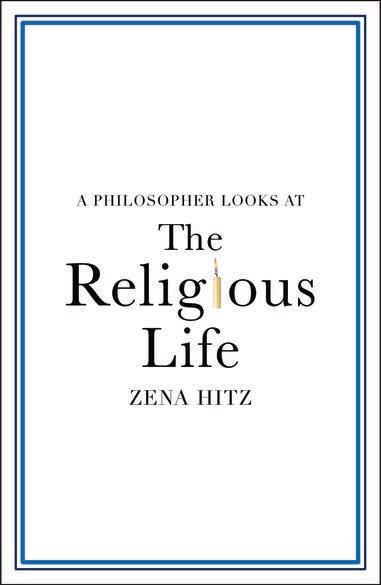
• The author is a respected prize-winner with a high public profile: the Dallas Institute of Humanities and Culture awarded her the prestigious 2020 Hiett Award in the Humanities
• A Philosopher Looks at the Religious Life will engage anyone at all who has wondered what it is like to renounce worldly things for a life of prayer and contemplation and what this means
www.cambridge.org/rights
rights@cambridge.org
CONTENTS
What is this book about?; Introduction: Renunciation and happiness; 1. The call; 2. Blessed are the poor; 3. Intimacy with God; 4. The family of humanity; 5. Abandonment and freedom; Conclusion: The last things.
ADDITIONAL INFORMATION
Level: General readers, graduate students
RUNNING HEAD
15
PHILOSOPHY
The Philosopher’s Guide to Parenthood
PHILOSOPHY THE PHILOSOPHER’S GUIDE TO PARENTHOOD
Storks, Surrogates, and Stereotypes
Teresa Baron
University of Nottingham
January 2023
229 x 152 mm c.218pp



978-1-00-929924-4 Hardback £85.00 / US$110.00
Our understanding of what it means to be a parent in any given context is shaped by our biological, social, legal, and moral concepts of parenthood. These are themselves subject to the influence of changing expectations, as new technologies are produced, cultural views of the family are transformed, and laws shift in response. In this book Teresa Baron provides a detailed and incisive overview of the key questions, widespread presuppositions, and dominant approaches in the field of philosophy of parenthood. Baron examines paradigm cases and problem cases alike through an interdisciplinary lens, bringing philosophy of parenthood into dialogue with research on family-making and childrearing from across the social sciences and humanities. Her book aims to answer old questions, draw out new questions, and interrogate notions that we often take for granted in this field, including the very concept of parenthood itself.
KEY FEATURES
WHY IT WILL SELL
• Applies philosophical methods whilst exploring relevant sociological and psychological research, and discussing relevant legal cases
• Provides detailed conceptual analysis of various forms of parenthood and examines the interrelationships between them
• Challenges existing approaches to analysis of ‘problem cases’ for moral parenthood, and creates a foundation for new approaches in future research
CONTENTS
Introduction; 1. Babies, blueprints, and blood ties: what makes a biological parent?; 2. Social roles, stereotypes, and being ‘seen’ as a parent; 3. ‘Do you have a licence for that?’ Legal parenthood and transfers of children; 4. Duties, dilemmas, and (re)distribution: moral perspectives on parenthood; 5. Paradigms and parental projects: the intersection of parenthood and reproductive ethics; Conclusion.

ADDITIONAL INFORMATION
Level: Academic researchers, graduate students
www.cambridge.org/rights
rights@cambridge.org
RUNNING HEAD
16
Storks, Surrogates, and Stereotypes
Teresa Baron
January 2023
244 x 170 mm c.298pp

978-1-00-909689-8 Paperback £22.99 / US$29.99
PHILOSOPHY ETHICS AND BUSINESS An Introduction
Kevin Gibson Marquette University, Wisconsin
This updated introduction to business ethics offers a clear and accessible framework for understanding the important and complex ethical issues facing business in the contemporary world. Kevin Gibson explains ethical concepts in plain language, showing how terms such as responsibility, autonomy, justice, equality, rights, and beneficence are central to the ways in which business is and should be conducted. He provides numerous examples and discusses cases including VW, Wells Fargo, the Boeing 737 Max, and the exploitation of rare earth minerals, and he pays special attention to recent and emerging issues such as the gig economy, internet commerce, racial and gender justice, and concerns about the impact of business on global climate change. His lively and comprehensive book will give readers the tools to identify and understand a range of problematic ethical issues that affect us all.
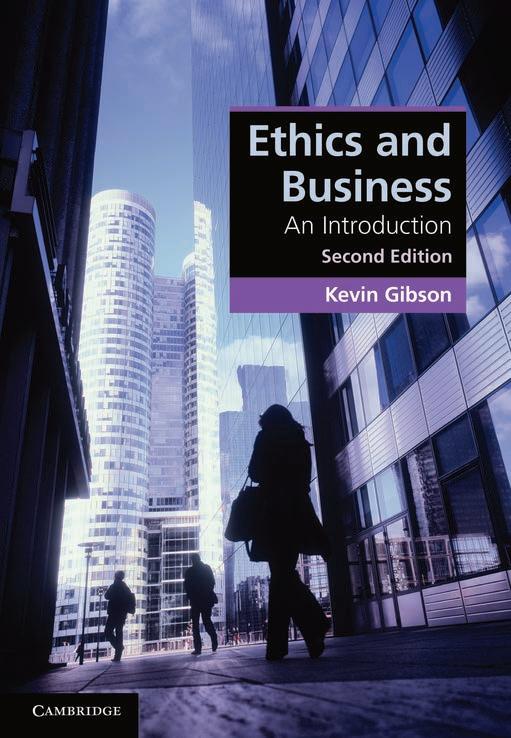
WHY IT WILL SELL
KEY FEATURES
• Reflects the evolution of new issues such as the gig economy, internet commerce, racial and gender justice, and concerns about the impact of business on global climate change
• Aligns with cutting edge thinking and reflects contemporary concerns about monetization, race, gender and implicit biases
• Explores numerous case studies and examples including VW, Wells Fargo, the Boeing 737 Max, and the exploitation of rare earth minerals
www.cambridge.org/rights rights@cambridge.org
CONTENTS
1. An Overview of Business Ethics; 2. Insights from Ethical Theory; 3. Capitalism and Its Ethical Implications; 4. Responsibility; 5. Autonomy; 6. Justice and Equality; 7. Rights; 8. Beneficence; 9. Business and the World.
ADDITIONAL INFORMATION
Level: Graduate students, undergraduate students Series: Cambridge Applied Ethics

RUNNING HEAD
17
February 2023
229 x 152 mm c.240pp



978-1-00-919890-5 Hardback
£20.00 / US$27.95
YOU CAN’T ALWAYS SAY WHAT YOU WANT The Paradox of Free Speech
Dennis Baron University of Illinois, Urbana-Champaign
The freedom to think what you want and to say what you think has always generated a pushback of regulation and censorship. This raises the thorny question: to what extent does free speech actually endanger speech protection? This book examines today’s calls for speech legislation and places it into historical perspective, using fascinating examples from the past 200 years, to explain the historical context of laws regulating speech. Over time, the freedom to speak has grown, the ways in which we communicate have evolved due to technology, and our ideas about speech protection have been challenged as a result. Now more than ever, we are living in a free speech paradox: powerful speakers weaponize their rights in order to silence those less-powerful speakers who oppose them. By understanding how this situation has developed, we can stand up to these threats to the freedom of speech.

WHY IT WILL SELL
KEY FEATURES
• Places key present-day concerns about free speech and speech regulation in a historical setting to reveal the ways that the past is prelude to the present
• A study of the protections and limitations placed on political speech, strong language, threatening words, ‘foreign’ language, and compelled speech, as well as a look at some current dangers to protecting speech in liberal democracies going forward
• Explores issues between the First and Second Amendments; the right to free speech and the right to bear arms
www.cambridge.org/rights
rights@cambridge.org
CONTENTS
1. Free speech, but...; 2. Guns and grammar; 3. Clear and present danger; 4. Strong language; 5. Threat level: orange; 6. America’s war on language; 7. Repeat after me; 8. Will free speech survive?
ADDITIONAL INFORMATION
Level: General readers, undergraduate students
RUNNING HEAD
18
POLITICS
March 2023
229 x 152 mm c.330pp


978-1-00-911420-2 Paperback £22.99 / US$29.99
DEADLY DECISION IN BEIJING
Succession Politics, Protest Repression, and the 1989 Tiananmen Massacre
Yang Su
University of California, Irvine
Three decades after 1989, historical materials are now available for understanding the Tiananmen protests in a new light. In a play-by-play account of the elite politics that led to the military crackdown, Yang Su addresses the repression of the protest in the context of political leadership succession. He challenges conventional views that see the military intervention as a necessary measure against a revolutionary mobilization. Beneath the political drama, Deadly Decision in Beijing explores the authoritarian regime’s perpetual crisis of leadership transition and its impact on popular movements.
KEY
WHY IT WILL SELL
• Utilises new historical materials for understanding the events of 1989
• Provides a fresh perspective on the study of government repression of protest and revolution
• Essential reading on elite politics and leadership transition in an authoritarian regime such as communist China

CONTENTS
1. Introduction: a decision to kill; Part I. Party-state Leadership in the Deng Era: 2. The coming of the Deng Era: 1976–1987; 3. The fate of two successors: 1980–April 15, 1989; Part II. Elite Politics and the Making of the Tiananmen Protest: 4. Early response and the growth of the protest: April 15–April 26, 1989; 5. Where was Deng Xiaoping? April 15–May 11, 1989; 6. How a moderate approach failed: April 26–May 17, 1989; Part III. The Decision for Military Intervention: 7. Was it a revolution? April 15–June 3, 1989; 8. The martial law decision: May 13–May 19, 1989; 9. Military operation as symbolic display of power: June 3–June 4, 1989; Part IV. The Political Impact: 10. Deng’s long game: 1989–1992; 11. Conclusion: Tiananmen and China’s communist authoritarianism.
ADDITIONAL INFORMATION
Level: Academic researchers, graduate students
FEATURES All Chinese languagerights with the author
www.cambridge.org/rights
rights@cambridge.org
RUNNING HEAD
19
POLITICS
January 2023
229 x 152 mm c.320pp 7 b/w illus. 6 maps 3 tables
978-1-00-905594-9 Paperback
£26.99 / US$34.99
POLITICS
UKRAINE’S UNNAMED WAR
Before the Russian Invasion of 2022
Dominique Arel
University of Ottawa
Jesse Driscoll
University of California, San Diego
The Russian invasion of Ukraine in 2022 has its roots in the events of 2013–2014. Russia cynically termed the seditionist conflict in Crimea and Eastern Donbas a ‘civil war’ in order to claim non-involvement. This flies in the face of evidence, but the authors argue that the social science literature on civil wars can be used help understand why no political solution was found between 2015 and 2022. The book explains how Russia, after seizing Crimea, was reacting to events it could not control and sent troops only to areas of Ukraine where it knew it would face little resistance (Eastern Donbas). Kremlin decisionmakers misunderstood the attachment of the Russianspeaking population to the Ukrainian state and also failed to anticipate that their intervention would transform Ukraine into a more cohesively ‘Ukrainian’ polity. Drawing on Ukrainian documentary sources, this concise book explains these important developments to a non-specialist readership.
KEY FEATURES
WHY IT WILL SELL
• Timely and short explainer on the roots of the current war
• Based on documentary evidence from Ukrainian-language sources

• Numerous original data visualizations in map form clarify the issues



CONTENTS
1. A civil war within the ‘Russian World’; 2. A theory of civil war onset in post-soviet Eurasia; 3. Before Maidan; 4. Regime change (Maidan); 5. Irredentist annexation (Crimea); 6. The Russian spring (East Ukraine); 7. The war and Russian intervention (Donbas); 8. A frozen conflict thaws.
ADDITIONAL INFORMATION
Level: Graduate students, academic researchers
www.cambridge.org/rights
rights@cambridge.org
RUNNING HEAD
20
January 2023
229 x 152 mm c.192pp 978-1-00-927716-7 Paperback £22.99 / US$29.99
PSYCHOLOGY POLITICAL PLASTICITY


The Future of Democracy and Dictatorship
Fathali M. Moghaddam Georgetown University
Political plasticity refers to limitations on how fast, how much, and in what ways political behavior does (or does not) change. In a number of important areas of behavior, such as leader-follower relations, ethnicity, religion, and the rich-poor divide, there has been long-term continuity of human behavior. These continuities are little impacted by factors assumed to bring about change such as electronic technologies, major wars, globalization, and revolutions. In addition to such areas of low political plasticity, areas of high political plasticity are considered. For example, women in education is discussed to illustrate how rapid societal change can be achieved. This book explains the psychological and social mechanisms that limit political plasticity, and shape the possibility of changes in both democratic and dictatorial countries. Students, teachers, and anyone interested in political behavior and social psychology will benefit from this volume.
WHY IT WILL SELL
KEY FEATURES
• Introduces and applies the concept of political plasticity as a tool for understanding change

• Provides examples of low and high political plasticity, promoting understanding of how slow or fast behavioral change occurs
• Explains how researchers have ignored long-term behavioral continuities and provides a more accurate picture
CONTENTS
List of Figures; Preface; Acknowledgements; 1. Political plasticity, the key to understanding the future of democracy and dictatorship; 2. Hard-wiring inside and outside people; Part I. Political Plasticity and Behavioral Continuity: 3. Why do leaders still exist? Leadership and followership; 4. Rich and poor – still just as different; 5. Ethnicity is forever; 6. Religion, eternally present but with a thousand faces; 7. The built environment and behavioral continuity; Part II. Change Agents, in Theory and Practice: 8. Revolutions and political plasticity; 9. War as transformative; 10. Technology forces change; 11. Globalization and deglobalization; Part III. Looking Ahead: 12. The eternal dictator and political plasticity; Afterword. Lessons learned: The example of women in education; Notes; References; Index.
ADDITIONAL INFORMATION
Level: Graduate students, professionals, general readers Series: Progressive Psychology
www.cambridge.org/rights
rights@cambridge.org
RUNNING HEAD
21
August 2023
198 x 129 mm c.244pp
978-1-00-929974-9 Paperback
£12.99 / US$16.95
PSYCHOLOGY RESILIENCE
The Science of Mastering Life’s Greatest Challenges



Third edition
Steven M. Southwick, Yale University Medical School, Connecticut
Dennis S. Charney, Mount Sinai Hospital, New York
Jonathan M. DePierro, Mount Sinai Hospital, New York
‘Life presents us all with challenges. Most of us at some point will be struck by major traumas such as the sudden death of a loved one, a debilitating disease, or a natural disaster. What differentiates us is how we respond. In this important book, three experts in trauma and resilience answer key questions such as What helps people adapt to life’s most challenging situations?, How can you build up your own resilience?, and What do we know about the science of resilience? Combining cutting-edge scientific research with the personal experiences of individuals who have survived some of the most traumatic events imaginable, such as the COVID-19 pandemic, this book provides a practical resource that can be used time and time again. The experts describe ten key resilience factors, including facing fear, optimism, and role models, through the experiences and personal reflections of highly resilient survivors. Each resilience factor will help anyone to adapt and grow from stressful life events and will bring hope and inspiration for overcoming adversity.’
WHY IT WILL SELL
KEY FEATURES
• Provides recommendations for building resilience based on the latest scientific developments, including new discoveries, in the field of human resilience
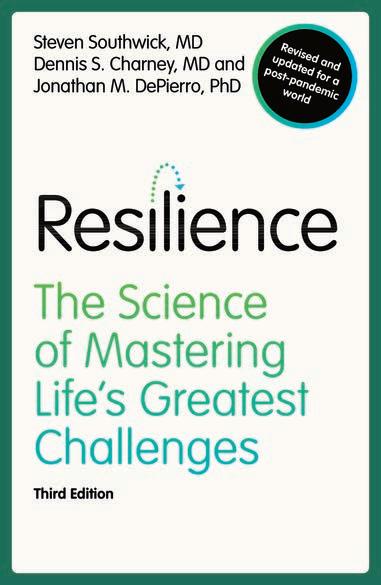
• Includes actional steps which readers can take to improve their lives, particularly in challenging times
• Brings together personal narratives from a diverse range of individuals helping readers feel they can overcome their own obstacles by following the 10 resilience factors outlined
www.cambridge.org/rights
rights@cambridge.org
CONTENTS
1. What is resilience?; 2. Optimism: belief in a brighter future; 3. Face your fears; 4. Moral compass; 5. Religion and spirituality; 6. Social support; 7. Role models; 8. Mind your body; 9. Challenge your mind; 10. Cognitive and emotional flexibility; 11. Meaning, purpose, and growth; 12. The practice of resilience; Resilience facing death: a tribute to Dr. Steven Southwick.
ADDITIONAL INFORMATION
Level: General readers, professionals
RUNNING HEAD
22
January 2023
229 x 152 mm c.200pp 978-1-00-928182-9 Paperback £22.99 / US$29.99


PSYCHOLOGY WORK-LIFE BALANCE
HR Training for Employee Personal Interventions
M. Joseph Sirgy Virginia Tech
Dong-Jin Lee Yonsei University
Based on a thorough review of the research on work-life balance, Sirgy and Lee identify a set of personal interventions that selected employees commonly use to increase their work-life balance and life satisfaction. Personal interventions of work-life balance involve five behavior-based strategies and four cognition-based strategies. The behavior-based strategies are engaging in multiple roles and domains, increasing role enrichment, engaging in behaviorbased compensation, managing role conflict, and creating role balance. The cognition-based strategies are segmenting roles and domains, integrating roles and domains, engaging in value-based compensation, and applying whole-life perspective in decision-making. This volume provides HR managers and HR consultants with pedagogical material designed to help them develop in-house workshops, seminars, and curricula for their employees to improve their worklife balance by using the personal interventions described in the book.
KEY FEATURES
WHY IT WILL SELL
• Reviews much of the current academic research on personal interventions related to worklife balance
• Provides pedagogical material to train employees for better work-life balance at business, nonprofit, and government organizations worldwide
• Offers support to HR managers in development of in-house workshops and seminars for their employees

CONTENTS
Part I. Making the Case for Work-Life Balance: 1. Introduction; 2. Why is work-life balance important?; 3. How does work-life balance contribute to life satisfaction?; Part II. BehaviorBased Personal Interventions of Work-Life Balance: 4. Engaging in multiple roles and domains; 5. Increasing role enrichment; 6. Engaging in behavior-based compensation; 7. Managing role conflict; 8. Creating role balance; Part III. Cognition-Based Personal Interventions of Work-Life Balance; 9. Segmenting roles and domains; 10. Integrating roles and domains; 11. Engaging in value-based compensation; 12. Applying whole-life perspective in decision-making; Part IV. Epilogue: 13. Conclusion.
ADDITIONAL INFORMATION
Level: Professionals, academic researchers
www.cambridge.org/rights
rights@cambridge.org
RUNNING HEAD
23
May 2023
c.225pp
978-1-00-933077-0 Hardback
£44.99 / US$59.99
PSYCHOLOGY THE GIFT OF AGING
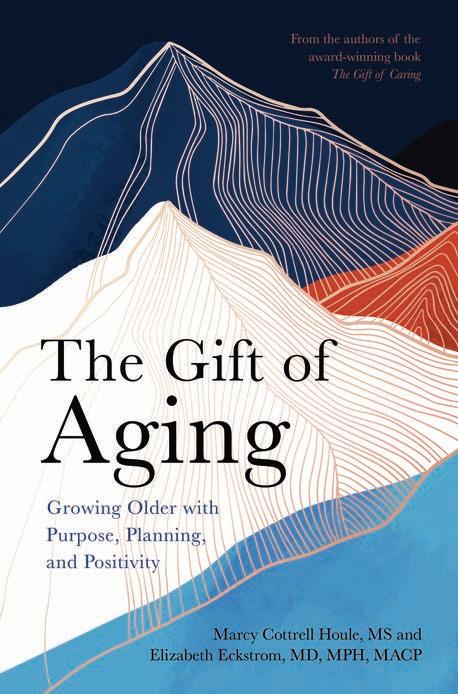


Growing Older with Purpose, Planning and Positivity
Marcy Cottrell Houle
Elizabeth Eckstrom Oregon Health and Science University
Award-winning authors Marcy Houle and Elizabeth Eckstrom have teamed up again following the success of their critically acclaimed book The Gift of Caring, winner of the 2016 National Christopher Award. This new book blends frontline science with inspirational stories and insights from wise elders for aging with health, joy, and purpose. The book explains how our bodies and brains age, defining what can be expected with aging and what is unusual. It demonstrates ways we can significantly increase our chances for a positive aging experience into our 80s, 90s and 100s. It offers key strategies for meeting the challenges of aging, informs us of issues of inclusion and equity, and advises on handling legal and financial affairs. The Gift of Aging illustrates how we can make the third act of our lives meaningful and fulfilling, ensuring we as elders can make a difference in our world.
KEY FEATURES
• Illuminates how we can make a difference in our later years, not only physically but also in preparing our finances and legal affairs for our later years. Equipping ourselves to meet aging benchmarks head on can allow us to find joy and meaning throughout our lives
• Defines what can be expected from aging and what is unusual. Demonstrates how we can increase our chances for a positive aging experience into our 80s, 90s, and 100s
• Uses case studies of those who have faced times of grief, loss, retirement, illness, isolation, and pain, and how they rose above the challenges to find quality of life and renewed joy
www.cambridge.org/rights
rights@cambridge.org
CONTENTS
Introduction; 1. Map and Compass; Part I. Caring for Your Mind: 2. A goal higher than joy; 3. Why does having purpose matter? 4. An open and determined mindset; 5. Autonomy: impossible without adaptability; 6. Dance, Lucille, dance; 7. The golden spurtle; 8. Is retirement bad for my health and well-being?; 9. Humanitude-why human connection is vital for everyone; 10. 106-proof; 11. Killing us quietly. Why social isolation is as bad for us as smoking; 12. Brain health across the life span. What can I do now to prevent dementia later on?; Part II. Caring for Your Body: 13. Protect your bones throughout your life; 14. Why your bladder, kidney and perineal health matters; 15. Help! My blood pressure is going up, I’m dizzy when I stand, and every doctor tells me something different about my cholesterol! What do I do?; 16. Our muscles throughout the life span: build resilience now to prevent frailty later; 17. The wonderful world of microbiota and the value of the Mediterranean diet; 18. What happens to our immune system as we age?; 19. The problem with pain and what we can do about it; 20. Don’t give in and live with pain. First, give physical therapy a try; Part III. Caring for Yourself and Your Family: practical planning: 21. Who needs an estate plan? Everyone; 22. Financial planning through the decades; 23. An ethical will: leaving your legacy to loved ones; 24. You’ve become a caregiver. Now what?; 25. So many living arrangements. Which one for you?; 26. Do this one simple thing and add 7.5 years to your life!; Part IV: Caring for Your Soul: 27. I don’t want to go downstairs!; 28. How not to be afraid of dying and ensure that your family remembers your death as a peaceful one; 29. Only two things; 30. Grief and loss: normal parts of aging. not to be missed; 31. Living to make a difference; 32. The great leveler; 33. View from the mountain; 34. The healing power of nature; 35. The best place in the world to grow old; 36. From revolution to pandemic; 37. The power of positivity; 38. An incredible journey; Afterword; Acknowledgements; Elizabeth’s original Mediterranean diet recipes; Index.

ADDITIONAL INFORMATION
Level: General readers, medical specialists/consultants, specialist medical trainees
RUNNING HEAD
24
DEVELOPING CRITICAL CONSCIOUSNESS IN YOUTH
Contexts and Settings
DEVELOPING CRITICAL CONSCIOUSNESS IN


YOUTH
Contexts and Settings
Erin B. Godfrey, New York University
Luke J. Rapa, Clemson University, South Carolina
May 2023
229 x 152 mm c.330pp
978-1-00-915382-9 Paperback £25.99 / US$34.99
Critical consciousness is the ability to critically analyse societal inequities and to develop the motivation and agency to promote social change. While there has been a proliferation of empirical work on critical consciousness over the last two decades, this is the first volume to consider how we can support youth’s critical consciousness development – their ability to recognize and fight injustice. Leading scholars address some of the field’s most urgent questions: How does critical consciousness develop? What are the key developmental settings (such as homes, schools, community programs) and societal experiences (racism, policy brutality, immigration, political turmoil) that inform critical consciousness development among youth? Providing novel insights into key school-based, out-of-school-based, and societal contexts that propel youth to greater critical reflection and action, this book will benefit scholars and students in developmental, educational, and community psychology, as well as practitioners working in schools, community-based organizations, and other youth settings.
KEY FEATURES
WHY IT WILL SELL
• Provides examples of how common settings in youth’s lives can be turned into spaces for learning about and fighting injustice

• Introduces on-the-ground learning and experiences from scholars and practitioners
• Provides new solutions and strategies to promote youth’s critical consciousness development
CONTENTS
Introducing the contexts and settings of youth’s critical consciousness development; Part I. Pedagogical, Curricular and School-Based Contexts: 1. Tools of whiteness and teaching for critical consciousness; 2. Critical consciousness development in the context of a school-based action civics intervention; 3. Critical consciousness in place-based action civics; Part II. ExtraCurricular Contexts: 4. Re-envisioning the ‘Big Three’: out of school time programs to promote critical consciousness development in youth of color; 5. Breaking down the arts: a novel exploration of how varying kinds of arts participation relate to critical consciousness among youth of color; 6. Advocacy-based service learning as a context for critical consciousness development; Part III. Societal Contexts: 7. Critical race consciousness: conceptualizing a model of race-specific critical consciousness among youth; 8. The quest for racial justice: an overview of research on racism and critical action for youth of color; 9. Critical consciousness development among undocumented youth: state of the science, historiography of immigration policy and recommendations for research and practice; 10. Influences of sense of social responsibility, immigrant bargain and immigrant optimism on critical consciousness development among immigrant youth of color; Concluding thoughts on the role of contexts and settings in youth critical consciousness development.
ADDITIONAL INFORMATION
Level: Academic researchers, professionals, graduate students Series: Contemporary Social Issues Series
RUNNING HEAD
25
www.cambridge.org/rights rights@cambridge.org
PSYCHOLOGY
CONTEMPORARY SOCIAL ISSUES
IN
consider school-based,
edited by Erin B. Godfrey and Luke J. Rapa Godfrey and Rapa
DEVELOPING CRITICAL CONSCIOUSNESS
YOUTH
February 2023
228 x 152 mm c.300pp


978-1-108-84415-4 Hardback
£85.00 / US$110.00
SOCIOLOGY
MARX IN THE ANTHROPOCENE
Towards the Idea of Degrowth Communism
 Kohei Saito University of Tokyo
Kohei Saito University of Tokyo
Facing global climate crisis, Karl Marx’s ecological critique of capitalism more clearly demonstrates its importance than ever. This book explains why Marx’s ecology had to be marginalized and even suppressed by Marxists after his death throughout the twentieth century. Marx’s ecological critique of capitalism, however, revives in the Anthropocene against dominant productivism and monism. Investigating new materials published in the complete works of Marx and Engels (Marx-Engels-Gesamtausgabe), Saito offers a wholly novel idea of Marx’s alternative to capitalism that should be adequately characterized as degrowth communism. This provocative interpretation of the late Marx sheds new lights on the recent debates on the relationship between society and nature and invites readers to envision a postcapitalist society without repeating the failure of the actually existing socialism of the twentieth century.
WHY IT WILL SELL
KEY FEATURES
• Offers a wholly new understanding of the late Marx’s vision of post-capitalist society
• Reconstructs the history of Marxism from an ecological perspective in order to answer why Marx’s ecology has been neglected for such a long time

• Offers a thorough critique of monist approach to the societynature-relationship that is popular in political ecology
CONTENTS
Dedication; Acknowledgements; Abbreviations; Introduction; Part I. Marx’s Ecological Critique of Capitalism and its Oblivion:
1. Marx’s theory of metabolism in the age of global ecological crisis;
2. The intellectual relationship of Marx and Engels revisited from an ecological perspective; 3. Lukács’s theory of metabolism as the foundation of ecosocialist realism; Part II. A Critique of Productive Forces in the Anthropocene; 4. Monism and the non-identity of nature; 5. The revival of utopian socialism and the productive forces of capital; Part III. Towards Degrowth Communism: 6. Marx as a degrowth communist; 7. The abundance of wealth in degrowth communism; Conclusion; References; Index.
ADDITIONAL INFORMATION
Level: Academic researchers, graduate students
www.cambridge.org/rights
rights@cambridge.org
RUNNING HEAD
26
Italian,SOLD:French,Japanese, Korean
January 2023
198 x 129 mm c.130pp
978-1-00-933341-2 Paperback
£12.99 / US$16.95
HOW TO FIX A BROKEN PLANET

Advice for Surviving the 21st Century
Julian Cribb Council for the Human Future

Do you want to help save human civilisation? If so, this book is for you. How to Fix a Broken Planet describes the ten catastrophic risks that menace human civilisation and our planet, and what we can all do to overcome or mitigate them. It explains what must be done globally to avert each megathreat, and what each of us can do in our own lives to help preserve a habitable world. It offers the first truly integrated world plan-of-action for a more sustainable human society – and fresh hope. A must-read for anyone seeking sound practical advice on what citizens, governments, companies, and community groups can do to safeguard our future.
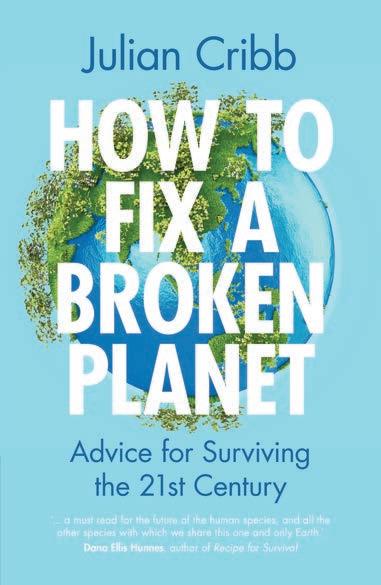
WHY IT WILL SELL
KEY FEATURES
• Provides hands-on solutions and practical advice for everyone on how to tackle the greatest threats facing humanity and our home planet in the modern age
• Explains the nature and scale of the ten catastrophic threats facing humanity
• Introduces an integrated world plan-of-action for avoiding the collapse of civilisation
CONTENTS
Preface; 1. Existential emergency; 2. Extinction …or survival?; 3. Resources for living; 4. Nuclear awakening; 5. Cooling Earth; 6. Clean up the planet; 7. Preventing pandemics; 8. Renewable food; 9. ‘One child fewer’; 10. Healing technological mayhem; 11. Ending the age of deceit; 12. Who are we, really?; 13. An Earth Standard Currency; 14. Tools for repairing the Earth; 15. Think like a human, act like a species; Notes; Index.
ADDITIONAL INFORMATION
Level: General readers, undergraduate students, professionals
www.cambridge.org/rights
rights@cambridge.org
RUNNING HEAD
27
SCIENCE
ENVIRONMENTAL
LIVING PLANET
ENVIRONMENTAL SCIENCE

THE LIVING PLANET


The State of the World’s Wildlife
Norman Maclean University of Southampton
Edited by NORMAN MACLEAN
May 2023
244 x 170 mm c.446pp
978-1-108-73165-2 Paperback
£39.99 / US$50.00
Since 1970, there has been an overall decline in wildlife populations in the order of 52%. Freshwater species populations have declined by 76%; species populations in Central and South America have declined by 83%; and in the Indo-Pacific by 67%. These are often not complete extinctions, but large declines in the numbers of animals in each species, as well as habitat loss. This presents us with a tremendous opportunity, before it is too late to rescue many species. This book documents the present state of wildlife on a global scale, using a taxonomic approach, and serving as a one stop place for people involved in conservation to be able to find out what is in decline, and the success stories that have occurred to bring back species from the brink of extinction – primarily due to conservation management techniques – as models for what we might achieve in the future.
WHY IT WILL SELL
KEY FEATURES
• The first book to present the current state of wildlife – globally – using a taxonomic approach
• Brings together renowned authors from around the world and many experts in their field, especially those affiliated with IUCN (International Union for the Conservation of Nature), the organisation that Red lists species

• Discusses the history and evolution of life on Earth, and presents the state of play for each of the major groups: flowering plants, non-flowering plants, fungi and other minor phyla, marine invertebrates, terrestrial invertebrates, fishes, amphibians, reptiles, birds, and marine and terrestrial mammals
www.cambridge.org/rights
rights@cambridge.org
CONTENTS
1. Introduction and the evolution of life on earth; 2. Flowering plants; 3. Bryophytes and Pteridophytes; Spore-bearing land plants; 4. Terrestrial mammals; 5. Marine mammals: exploited for millennia, but still holding on; 6. Birds; 7. Reptiles; 8. Amphibians; 9. Freshwater fishes: threatened species and threatened waters on a global scale; 10. The amazing yet threatened world of marine fishes; 11. Insects; 12. Marine invertebrates; 13. Non-insect terrestrial arthropods; 14. Terrestrial arthropods other than arthropods and molluscs; 15. Non-marine Molluscs; 16. An account of the diversity and conservation of fungi and their close relatives; 17. Simple life forms; 18. Assessing species conservation status: the IUCN red list and green status; 19. Problems with the world`s ecosystems; 20. Conservation methods and successes; 21. What does the future hold for our planet and its wildlife?; Index.
ADDITIONAL INFORMATION
Level: Undergraduate students, graduate students, academic researchers
RUNNING HEAD
28
THE
OF THE
WILDLIFE
STATE
WORLD'S
THE
February 2023
253 x 203 mm c.300pp
978-1-108-46784-1 Paperback
£36.99 / US$49.99
SEEING THE FOREST FOR THE TREES
Forests, Climate Change, and Our Future
Gordon Bonan
National Center for Atmospheric Research, Boulder, Colorado
For centuries, people have understood that forests, and our utilisation of them, influence the climate. With modern environmental concerns, there is now scientific, governmental, and popular interest in planting trees for climate protection. This book examines the historical origins of the idea that forests influence climate, the bitter controversy that ended the science, and its modern rebirth. Spanning the 1500s to the present, it provides a broad perspective across the physical and biological sciences, as well as the humanities, to explain the many ways forests influence climate. It describes their use in climate-smart forestry and as a natural climate solution, and demonstrates that in the forest–climate question, human and sylvan fates are linked. Accessibly written with minimal mathematics, it is ideal for students in environmental and related sciences, as well as anyone with an interest in understanding the environmental workings of forests and their interactions with climate.
WHY IT WILL SELL
KEY FEATURES
• Provides a thorough historical review of how forests have been used to manage the climate over the past 500 years
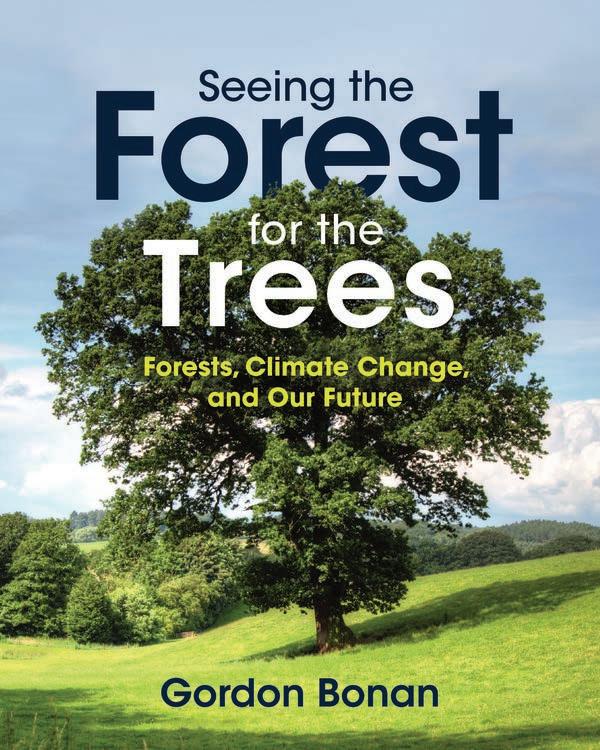
• Introduces the fundamental science using simple explanations to provide a comprehensive overview of our current understanding
• Contains illustrative examples of interdisciplinary Earth system science in action, showing how atmospheric science and ecology can come together to solve global problems
www.cambridge.org/rights
rights@cambridge.org
CONTENTS
Part I: Historical Perspective: 1. The Forest-Climate Question; 2. Tempering the Climate, c. 1600–1840; 3. Destroying the Rains, c. 1500–1830; 4. Planting Trees for Rain, c. 1840–1900; 5. Making a Science: Forest Meteorology, c. 1850–1880; 6. American Meteorologists Speak Out, c. 1850–1910; 7. Views of Forests; Part II: The Scientific Basis: 8. Global Physical Climatology; 9. Forest Biometeorology; 10. Scientific Tools; 11. Forest Microclimates; 12. Water Yield; 13. Carbon Sequestration; 14. Forest Macroclimates; 15. Case Studies; 16. Climate-Smart Forests; 17. Forests of the Future; 18. The Forests Before Us; Notes; References; Index.


ADDITIONAL INFORMATION
Level: Undergraduate students, academic researchers, graduate students
RUNNING HEAD
29
ENVIRONMENTAL SCIENCE
February 2023
229 x 152 mm c.75pp
978-1-00-918421-2 Paperback
£17.00 / US$22.00
TECHNOLOGY AN ARCHAEOLOGICAL PERSPECTIVE ON THE HISTORY OF TECHNOLOGY
A. Mark Pollard University of Oxford
Chris Gosden University of Oxford
This volume represents an introduction to a new world-wide attempt to review the history of technology, which is one of few since the pioneering publications of the 1960s. It takes an explicit archaeological focus to the study of the history of technology and adopts a more explicit socially-embedded view of technology than has commonly been the case in mainstream histories of technology. In doing so, it attempts to introduce a more radical element to explanations of technological change, involving magic, alchemy, animism –in other words, attempting to consider technological change in terms of the ‘world view’ of those involved in such change rather than from an exclusively western scientific perspective.
www.cambridge.org/rights
rights@cambridge.org
CONTENTS
Preface; Setting the Scene; What is technology?; Earlier Approaches to the History of Technology; Varying Theoretical Approaches to the History of Technology; Cultural Logics and Materials; Spatial and Temporal Orders of Technology; How Does Technology Change?; Technology Transfer; Technological Choice and ‘Intentionality’; Final Thoughts.
ADDITIONAL INFORMATION
Level: Academic researchers, graduate students
Series: Elements in Archaeological Perspectives on Materials and Technologies




RUNNING HEAD
30
February 2023
246 x 189 mm 466pp 978-1-00-918060-3 Paperback £44.99 / US$59.99
ENGINEERING AN INTRODUCTION TO GENETIC ENGINEERING

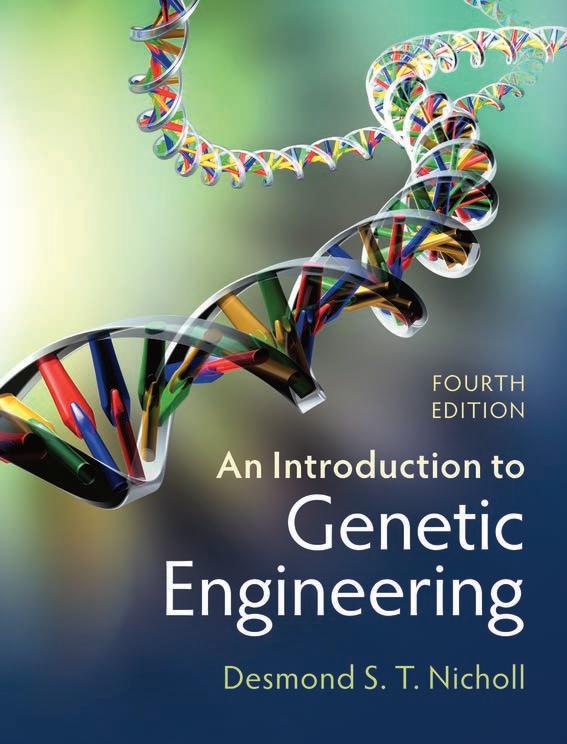
Fourth edition
Desmond S. T. Nicholl
The fourth edition of this popular textbook retains its focus on the fundamental principles of gene manipulation, providing an accessible and broad-based introduction to the subject for beginning undergraduate students. It has been brought thoroughly up to date with new chapters on the story of DNA and genome editing, and new sections on bioethics, significant developments in sequencing technology and structural, functional and comparative genomics and proteomics, and the impact of transgenic plants. In addition to chapter summaries, learning objectives, concept maps, glossary and key word lists the book now also features new concluding sections, further reading lists and websearch activities for each chapter to provide a comprehensive suite of learning resources to help students develop a flexible and critical approach to the study of genetic engineering.
KEY FEATURES
• A truly accessible, yet technically thorough and comprehensive, introduction to the subject
• An established and popular text, thoroughly updated to reflect the current state of the field
• Chapter summaries, aims, learning objectives, websearch tasks and concept maps combine to help students understand the topic within a sound conceptual framework
• Pedagogically rich and suitable for one or two semester courses
• Now in full colour throughout
• In-chapter features including chapter summaries, concept maps and online research boxes to stimulate further reading
• Online resources including further reading, URLs, figures, flashcards, exercises and animations
www.cambridge.org/rights
rights@cambridge.org
CONTENTS
Preface; Part I. Genetic Engineering in Context: 1. Introduction; 2. The story of DNA; 3. Brave new world or genetic nightmare?; Part II. The Basis of Genetic Engineering: 4. Introducing molecular biology; 5. The tools of the trade; 6. Working with nucleic acids; Part III. The Methodology of Gene Manipulation: 7. Host cells and vectors; 8. Cloning strategies; 9. The polymerase chain reaction; 10. Selection, screening and analysis of recombinants; 11. Bioinformatics; 12. Genome editing; Part IV. Genetic Engineering in Action: 13. Investigating genes, genomes and ‘otheromes’; 14. Genetic engineering and biotechnology; 15. Medical and forensic applications of gene manipulation; 16. Transgenic plants and animals; 17. The other sort of cloning; Glossary; Index.
Additional Resources: http://www.cambridge.org/9781009180597
Links to further reading, figures, flashcards, exercises, animations, JPEGs and PPTs of figures and tables

ADDITIONAL INFORMATION
Level: Undergraduate students, graduate students
RUNNING HEAD
31
February 2023
253 x 203 mm 622pp
978-1-107-13527-7 Hardback
£49.99 / US$64.99
ENGINEERING HYDROLOGY

An Introduction Fourth edition
Wilfried Brutsaert
Cornell University, New York
Wilfried Brutsaert (2022 Stockholm Water Prize Laureate) has revised and updated his classic textbook to take into account recent developments, while retaining the rigor and structure of the previous edition to introduce the fundamental principles of hydrology. New topics include the response of the global water cycle to climate change, the land surface energy budget closure, snow melt, groundwater trends and statistical surface variability with disturbed atmospheric boundary layers. Hydrologic phenomena are dealt with at the spatial and temporal scales at which they occur in nature. The physics and mathematics necessary to describe these phenomena are introduced and developed: readers will require a working knowledge of calculus and basic fluid mechanics. This classroom-tested textbook – based on the author’s longrunning course at Cornell – is invaluable for entry-level courses in hydrology directed at advanced undergraduate and graduate students in physical science and engineering. In addition, it is also a great reference text for practising scientists and engineers.
KEY FEATURES
WHY IT WILL SELL
• Emphasises the fundamental principles of hydrology, building the basis for students to go on to further research

• Clarifies the underlying physical processes so that students can develop a thorough understanding of hydrological concepts
• Second edition has been brought up-todate to reflect key changes from the last two decades
• Applies fluid mechanics to the natural environment, providing students with a solid understanding of hydrological principles within the context of real-world situations


• Online instructor resources – including a solutions manual and digital copies of all figures – offer additional support for the classroom
• All figs from the book as PowerPoints and JPEGs
• Solutions manual for all student exercises in the book
www.cambridge.org/rights
rights@cambridge.org
CONTENTS
1. Introduction; Part I. Water In The Atmosphere: 2. Water aloft: fluid mechanics of the lower atmosphere; 3. Precipitation; 4. Evaporation; Part II. Water On The Surface: 5. Water on the land surface: Fluid mechanics of free surface flow; 6. Overland flow; 7. Streamflow routing; Part III. Water Below The Surface: 8. Water beneath the ground: fluid mechanics in porous materials; 9. Infiltration and related unsaturated flows; 10. Groundwater outflow and base flow; Part IV. Flows At The Catchment Scale In Response To Precipitation: 11. Streamflow generation: mechanisms and parameterization; 12. Streamflow response at the catchment scale; 13. Elements of frequency analysis in hydrology; 14. Afterword: a short historical sketch of theories about the water circulation on Earth; Appendix. Some useful mathematical concepts. Additional Resources: http://www.cambridge.org/9781107135277
Solutions manual, example syllabus for instructors, all figures as JPG and PPT files
ADDITIONAL INFORMATION
Level: Undergraduate students, graduate students, academic researchers
RUNNING HEAD
32
February 2023
229 x 152 mm c.300pp
978-1-108-49783-1 Hardback c. £85.00 / c. US$110.00
WHO OWNS OUTER SPACE?
International Law, Astrophysics, and the Sustainable Development of Space


Michael Byers
University of British Columbia, Vancouver
Aaron Boley
University of British Columbia, Vancouver
From Space debris to asteroid strikes to anti-satellite weapons, humanity’s rapid expansion into Space raises major environmental, safety, and security challenges. In this book, Michael Byers and Aaron Boley, an international lawyer and an astrophysicist, identify and interrogate these challenges and propose actionable solutions. They explore essential questions from, ‘How do we ensure all of humanity benefits from the development of Space, and not just the world’s richest people?’ to ‘Is it possible to avoid war in Space?’ Byers and Boley explain the essential aspects of Space science, international law, and global governance in a fully transdisciplinary and highly accessible way. Addressing the latest and emerging developments in Space, they equip readers with the knowledge and tools to engage in current and critically important legal, policy, and scientific debates concerning the future development of Space. This title is also available as Open Access on Cambridge Core.
KEY FEATURES
WHY IT WILL SELL
• Available as Open Access on Cambridge Core
• Identifies and analyses emerging challenges in Space, from Space debris to asteroid strikes to anti-satellite weapons, and proposes actionable solutions

• Draws from the co-authors’ transdisciplinary research to make complicated aspects of international law and astrophysics accessible to all readers
• Gives readers the essential knowledge they need to follow and engage in current and critically important legal, policy and scientific debates
www.cambridge.org/rights
rights@cambridge.org
CONTENTS
1. Space tourism; 2. Mega-constellations; 3. Mega-constellations and international law; 4. Abandoned rocket bodies; 5. Space mining; 6. Planetary defence; 7. Space security; 8. Antisatellite weapons and international law.
ADDITIONAL INFORMATION
Level: Academic researchers, graduate students Series: Cambridge Studies in International and Comparative Law
RUNNING HEAD
33
ASTRONOMY
October 2022
229 x 152 mm c.200pp
978-1-316-51192-3 Hardback
£44.99 / US$59.99
MATHEMATICS
WHY DOES MATH WORK … IF IT’S NOT REAL?



Episodes in Unreasonable Effectiveness
Dragan Radulovic Florida Atlantic University
According to G. H. Hardy, the ‘real’ mathematics of the greats like Fermat and Euler is ‘useless,’ and thus the work of mathematicians should not be judged on its applicability to real-world problems. Yet, mysteriously, much of mathematics used in modern science and technology was derived from this ‘useless’ mathematics. Mobile phone technology is based on trig functions, which were invented centuries ago. Newton observed that the Earth’s orbit is an ellipse, a curve discovered by ancient Greeks in their futile attempt to double the cube. It is like some magic hand had guided the ancient mathematicians so their formulas were perfectly fitted for the sophisticated technology of today. Using anecdotes and witty storytelling, this book explores that mystery. Through a series of fascinating stories of mathematical effectiveness, including Planck’s discovery of quanta, mathematically curious readers will get a sense of how mathematicians develop their concepts.
KEY FEATURES
• Explores why it is the case that no matter how unreal the objects mathematicians create and study are, somehow, whether a few decades or few centuries later, science encounters a phenomenon tailor-made for some of this weird mathematics
• Features interesting anecdotes, unexpected twists and turns, and flamboyant characters rarely heard in a classroom
• Consists of numerous stories that work together, but can also be read independently
• Accessible to anyone with mathematical curiosity and a basic familiarity with high school calculus (no matter if you’re currently taking the course or took it decades ago)
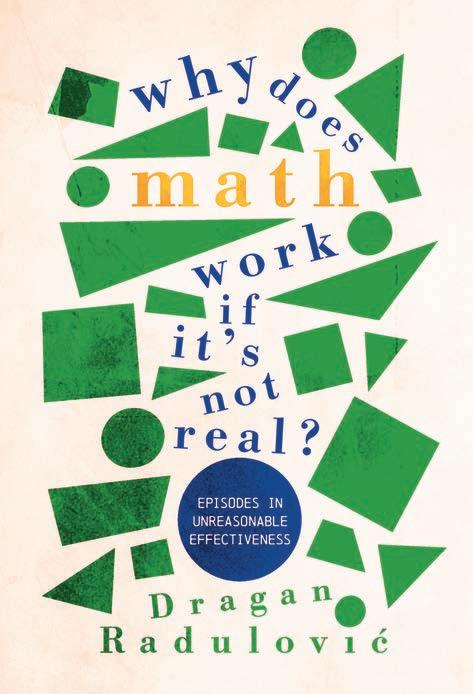
www.cambridge.org/rights
rights@cambridge.org
CONTENTS
Preface; Acknowledgements; Part I. Rare Axioms; 1. Introducing the Mystery; 2. On Classical Mathematics; 3. On Modern Physics; Intermezzo: What Have We Learned?; 4. On Computer Games; 5. On Mathematical Logic; 6. On Postulates and Axioms; Part II. The Oracle; 7. Introducing the Oracle; 8. On Probability; 9. The Oracle, Its Majesty; Epilogue: The Eternal Blueprint; Post Scriptum: On Mathematical Grand Design; Appendix; Recommended Reading; Index.
ADDITIONAL INFORMATION
Level: Undergraduate students, amateurs/enthusiasts
RUNNING HEAD
34
Croatian and Serbianrights with the author
December 2022
229 x 152 mm 338pp
978-1-108-99986-1 Paperback £19.99 / US$24.99
STATISTICS DICING WITH DEATH
Living by Data


Second edition
Stephen Senn
As a result of the COVID-19 pandemic, medical statistics and public health data have become staples of newsfeeds worldwide, with infection rates, deaths, case fatality and the mysterious R figure featuring regularly. However, we don’t all have the statistical background needed to translate this information into knowledge. In this lively account, Stephen Senn explains these statistical phenomena and demonstrates how statistics is essential to making rational decisions about medical care. The second edition has been thoroughly updated to cover developments of the last two decades and includes a new chapter on medical statistical challenges of COVID-19, along with additional material on infectious disease modelling and representation of women in clinical trials. Senn entertains with anecdotes, puzzles and paradoxes, while tackling big themes including: clinical trials and the development of medicines, life tables, vaccines and their risks or lack of them, smoking and lung cancer, and even the power of prayer.
WHY IT WILL SELL
KEY FEATURES
• Explains the vital importance of statistical and probabilistic reasoning in scientific medicine, for example in the MMR debate
• Includes a brand new chapter on the statistics of COVID-19 and new material on the representation of women in clinical trials and on infectious disease modelling

• Written in a humorous style, illustrating its complex themes with accounts of puzzling, paradoxical and potentially misleading phenomena
www.cambridge.org/rights
rights@cambridge.org
CONTENTS
1. Circling the square; 2. The diceman cometh; 3. Trials of life; 4. Of dice and men; 5. Sex and the single patient; 6. A hale view of pills (and other matters); 7. Time’s tables; 8. A dip in the pool; 9. The things that bug us; 10. The law is a ass; 11. The empire of the sum; 12. Going viral; Notes; Index.
ADDITIONAL INFORMATION
Level: General readers, professionals
RUNNING HEAD
35
March 2023
198 x 129 mm 226pp
978-1-00-932518-9 Paperback
£9.99 / US$12.95
MEDICINE A TATTOO ON MY BRAIN
A Neurologist’s Personal Battle against Alzheimer’s Disease
Daniel Gibbs
Emeritus of Oregon Health and Science University
Teresa H. Barker
Freelance journalist and author of scientific non-fiction

Dr Daniel Gibbs is one of 50 million people worldwide with an Alzheimer’s disease diagnosis. Unlike most patients with Alzheimer’s, however, Dr Gibbs worked as a neurologist for twenty-five years, caring for patients with the very disease now affecting him. Also unusual is that Dr Gibbs had begun to suspect he had Alzheimer’s several years before any official diagnosis could be made. Forewarned by genetic testing showing he carried alleles that increased the risk of developing the disease, he noticed symptoms of mild cognitive impairment long before any tests would have alerted him. In this highly personal account, Dr Gibbs documents the effect his diagnosis has had on his life and explains his advocacy for improving early recognition of Alzheimer’s. Weaving clinical knowledge from decades caring for dementia patients with his personal experience of the disease, this is an optimistic tale of one man’s journey with early-stage Alzheimer’s disease. Soon to be a documentary film on MTV/Paramount +.
KEY FEATURES
• The combined narrative of Dr Gibbs’ clinical knowledge and his engaging personal experience with the disease ensures the book will appeal to both professional and lay audiences with an interest in brain health

• Lived-experience commentary from a patient living with Alzheimer’s disease provides an insight into the uncertainty and lack of information before and after a diagnosis, and offers reassurance to other patients about what lies ahead
• An optimistic call-to-action for further investment in the research of early-stage Alzheimer’s disease, where patients who are otherwise pre-symptomatic still have the chance to slow the progression of the disease with lifestyle changes and potential medical treatments


www.cambridge.org/rights
rights@cambridge.org
CONTENTS
Acknowledgements; Introduction; Prologue; 1. Beacon Rock; 2. Forewarned and Forearmed; 3. The Smell of Baking Bread; 4. Sneak Preview; 5. A Stubborn Puzzle; 6. The Locked Box and the Family Tree; 7. The Measure of Memory; 8. Orcas, Nonetheless; 9. My Brain, My Self; 10. The Reveal; 11. Cognitive Reserve: Brain Cells in the Bank; 12. My Experimental Life; 13. When ARIA is More Than an Operatic Solo; 14. My Experiential Life: Living with Early-Stage Alzheimer’s Disease; 15. Madeleines, Music and African Doves; 16. It’s Only Scary if You Look Down; 17. Beyond DNA: Family History Reconsidered; 18. NEWS AT 5: Retired Neurologist Battles Alzheimer’s; 19. The Forest, the Trees and the Ground Beneath My Feet; 20. What’s in a Name? Alzheimer’s Reimagined; 21. A Meaningful Outcome; Epilogue: The Writing Life; Epilogue: The Writing Life Act II; Appendix: The MIND Diet Basics; Resources; Index.
ADDITIONAL INFORMATION
Level: General readers, medical specialists/consultants
RUNNING HEAD
36
May 2023
254 x 203 mm c.448pp
978-1-108-83805-4 Hardback £175.00 / US$225.00
MEDICINE
INFERTILITY IN THE MALE



Fifth edition
Larry I. Lipshultz, Baylor College of Medicine, Texas
Stuart S. Howards, University of Virginia
Craig S. Niederberger, University of Illinois, Chicago
Dolores J. Lamb, Weill Cornell Medical College, New York
This gold standard text has kept its readers abreast of rapid advancements in reproductive medicine and surgery since 1983. Continuing this tradition, this fifth edition has been fully updated and revised to provide clear, didactic advice on best practice for a variety of clinical situations faced by practitioners across many specialties – including urologists, gynecologists, reproductive endocrinologists, medical endocrinologists and many in internal medicine and family practice who see men with suboptimal fertility and reproductive problems. Completely restructured to include pedagogical features such as easily accessible key concepts that cement understanding and real-world use. Covering everything from foundations of anatomy and embryology, through clinical evaluation, diagnostic approaches, treatment and fertility care in context within the healthcare system and society, thrilling advances and future directions are also included. This new edition is an essential reference for all who are working in this young and rapidly evolving field.
WHY IT WILL SELL
KEY FEATURES
• Written by a prestigious team of editors and authors from multi-disciplinary backgrounds, this book comprises a wealth of knowledge and experience designed to bring readers from a variety of specialties to a shared level of understanding
• Provides practical guidance on managing patients, with accompanying videos demonstrating techniques to aid readers’ learning
• Presenting up to date advice and techniques in this rapidly evolving field, this fifth edition has been thoroughly updated and includes new chapters on Gender Affirmation, Global and Cultural Aspects, and Oncofertility
www.cambridge.org/rights
rights@cambridge.org
CONTENTS
Introduction; Part I. Scientific Foundations of Male Infertility: 1. Anatomy and embryology of the male reproductive tract and gonadal development, the epididymis and accessory sex organs; 2. Cellular architecture and function of the testis; 3. Maturation and function of sperm; 4. The male reproductive endocrine system; 5. Erection, emission, and ejaculation; 6. Genomics, epigenetics and male reproduction; Part II. Clinical Evaluation of the Infertile Male: 7. Infertility as a metric of men’s health; 8. Ambulatory evaluation of the subfertile male; 9. Evaluation of the infertile male’s partner; 10. Imaging the male reproductive system; 11. The environment and male fertility; 12. Endocrine causes of male infertility: diagnosis and treatment; 13. Spermatogenesis: diagnosis of normal and abnormal states; 14. Inheritance and male fertility; 15. The varicocele; 16. Infection, inflammation, and immunological causes of male infertility; Part III. Laboratory Diagnosis of Male Infertility: 17. The Laboratory Evaluation of the Infertile Male; 18. Advanced diagnostic approaches to male infertility; 19. Evaluating defects in sperm function; 20. Cryopreservation of sperm and testis tissue; Part IV. Treatment of Male Infertility: 21. Medical treatment of male infertility; 22. Surgery to improve sperm delivery; 23. Surgical sperm extraction; 24. The use of sperm in assisted reproductive technology; 25. Male oncofertility; 26. Male contraception; 27. Future directions in male infertility; Part V. Healthcare Systems and Culture: 28. Mental health and male reproduction; 29. Legal issues and male reproduction; 30. Gender affirmation, transgender, and male reproduction; 31. Global and cultural aspects of male reproductive care; Index.
ADDITIONAL INFORMATION
Level: Medical specialists/consultants
RUNNING HEAD
37
March 2023
234 x 156 mm c.168pp



978-1-00-921883-2 Hardback
£64.99 / US$84.99
MEDICINE WHY MOTHERS DIED AND HOW THEIR LIVES ARE SAVED
The Story of Confidential Enquiries into Maternal Deaths

James Owen Drife, University of Leeds
Gwyneth Lewis, University College London
James P Neilson, University of Liverpool
Marian Knight, National Perinatal Epidemiology Unit, Oxford
Griselda Cooper, University of Birmingham
Roch Cantwell, Southern General Hospital, Glasgow
One of the most dramatic changes to women’s lives in the twentieth century was the advent of safe childbirth, reducing the maternal mortality rate from 1 in 400 births to 1 in 10,000 in just 80 years. The impetus behind this change was the Confidential Enquiries into Maternal Death (CEMD), now the world’s longest running self-audit of a healthcare service. Here, leading authors in the CEMD tell the story of the pioneering clinicians behind the push for improvements, who received little recognition for their work despite its farreaching consequences. One by one, the leading causes of maternal death were identified and resolved, from sepsis to safe abortions and more recently psychiatric illness and social and ethnic disparities in healthcare. Global maternal mortality is still too high; this valuable book shows how significant advances in maternal healthcare are possible when clinicians, politicians and the public work together.
KEY FEATURES
• Written in an accessible style, this is the first book outlining the history of the Confidential Enquiries into Maternal Death, filling an important gap for readers with an interest in feminist and social issues

• The authors of this book have been heavily involved with the Confidential Enquiries into Maternal Death for many years, giving readers an insight into the realities and frustrations of researching and writing the reports
• Contributors from South Africa, India and the US provide an international perspective, explaining how they applied lessons from the Confidential Enquiries into Maternal Death to their own healthcare services. Readers will gain an understanding of how recommendations can be put into practice in different societal contexts
www.cambridge.org/rights
rights@cambridge.org
CONTENTS
1. Historical background; 2. The first steps: 1900–1939; 3. How the confidential enquiries evolved; 4. The missing chapter? Prolonged labour and obstetric trauma; 5. How the change began: the story of sepsis; 6. Haemorrhage then and now; 7. Hypertension: enquiries, trials and recommendations; 8. The story of abortion; 9. Challenging tradition: the story of embolism; 10. Pregnancy and illness: indirect deaths; 11. Maternal death due to anaesthesia; 12. Psychiatric illness; 13. The mothers who died: the social deteminants of maternal deaths; 14. The legacy in the UK: the concept of ‘near miss’ and the need to keep saving lives; 15. International maternal health: global action; 16. International action: personal views.
ADDITIONAL INFORMATION
Level: Medical specialists/consultants, specialist medical trainees, general readers
RUNNING HEAD
38
April 2021
190 x 120 mm c.192pp


978-1-911623-72-4 Paperback
£29.99 / US$39.99
THE BODY IN THE MIND
Exercise Addiction, Body Image and the Use of Enhancement Drugs
Ornella Corazza
University of Hertfordshire
Artemisa Rocha Dores
School of Health, Polytechnic Institute of Porto, Portugal
In a society that strives for appearance, fitness is increasingly viewed as a means to reach a certain aesthetic ideal, rather than a way to improve health and physical performance. Every day millions of posts appear on social media promoting a visual representation of apparently fit, healthy and ‘perfect’ bodies. Combining personal accounts, clinical cases, and scientific research, this book explores how such new trends in society can lead to the development of exercise addiction and body image disorders. It explains how such a concern with physical appearance can act as a precursor or be symptomatic of other conditions, such as eating disorders, mood disorders, and the use of performance and image enhancing drugs. It highlights throughout the importance of raising awareness amongst health professionals, including psychiatrists, psychologists, mental health nurses, social workers and primary care physicians, of this growing challenge to prevent harm and improve treatment.
WHY IT WILL SELL
KEY FEATURES
• Addresses a knowledge gap in the relation between exercise addiction, body image disorders and the use of performance and image enhancing drugs, allowing readers to better understand this growing societal issue

• Raises awareness about the risks associated with this disorder to prevent harm and improve treatment
• Explores the motivations behind such harmful behaviours, reducing the stigma associated with such disorders and the use of enhancement drugs
CONTENTS
Section 1. From exercise to addiction: an introduction to the phenomenon; 1. Exercise addiction: evolution and challenges for its recognition as a clinical disorder;
2. From exercise to addiction: the fitspirational era of image and performance-enhancement;
3. The Covid-19 pandemic: a novel risk factor for exercise addiction and related disorders; 4. Excessive exercise and image- and performance-enhancing drug use among sports disciplines and the role of mind-body training;
5. The ideal of the perfect body: appearance anxiety, excessive exercising and use of image- and performance-enhancing drugs; 6. Exercise, fitspiration and the role of social media; 7. Eating disorders and over-exercise; 8. Exercise and the use of image- and performance-enhancing drugs within the gym environment; 9. Bodybuilding, exercise and image- and performance-enhancing drug use during the Covid-19 pandemic; 10. How to treat exercise addiction: psychological interventions and new pharmacological perspectives; Section 2. Reaching the extreme with exercise: a collection of clinical case studies; 11. Being versus appearing: two sides of the same coin? A case report; 12. Reducing excessive exercise behaviour using online Cognitive-Behavioural Therapy: the case of a middle-aged adult; 13. The story of my life; 14. Money Honey: an interview with an ‘informed’ patient; Section 3. Exploring the motivations behind exercise addiction
15. Bodybuilding saved my life; 16. An interview with James Hollingshead: exploring the balance between focus, professionalism and addiction; 17. An interview with Dave Croslands: a life with performance-enhancing drugs; 18. Being comfortable in your own skin.
ADDITIONAL INFORMATION
Level: Specialist medical trainees, medical specialists/consultants, primary care physicians/GPs
RUNNING HEAD
39
www.cambridge.org/rights rights@cambridge.org
MEDICINE
August 2023
978-1-00-922505-2 Paperback
TBA / TBA
MEDICINE THE LITHIUM HANDBOOK
Stahl’s Handbooks
Jonathan M. Meyer University of California, San Diego
Stephen M. Stahl University of California, San Diego
Worldwide efforts to promote greater lithium use for mood disorders have increased the need for evidence-based guidance addressing key questions related to initiation, monitoring and adverse effect management. This practical handbook provides clinicians with a detailed explanation of lithium's renal journey, how this informs our understanding of polyuria pathogenesis and how medications or hyponatremia can alter lithium clearance. Covering efficacy, pharmacokinetics, toxicity, discontinuation, and use in special patient groups including pregnant and breastfeeding women, older or younger patients, each section also provides a detailed background for its suggested logical approach to managing lithium's renal and other adverse effects. Using the latest data, the book outlines rationales for specific management decisions, and prioritizes options to provide clinical guidance on the best course of action. Colourcoded lists and tables, bulleted text, and diagrams illustrate important points throughout, helping to make information accessible and easy-to-digest. An essential resource for mental health professionals worldwide.
KEY FEATURES
• A logical, evidence-based framework for important clinical issues related to lithium treatment, guiding the clinician through the reasoning process for use of eGFR, albumin-to-creatinine ratio, early morning urine osmolality and the 24h fluid intake record to monitor renal parameters during lithium treatment, and how to interpret and respond to changes in these measures. It offers a reasoned approach to management of non-renal adverse effects, how to interpret and manage changes in TSH and serum calcium, and how to address patient complaints of cognitive dysfunction, polyuria, tremor and other common clinical situations.
• Provides detailed coverage of previously overlooked topics such as lithium use during lactation or in patients with Brugada syndrome, and a discussion of the pathogenesis for adverse effects such as hyperparathyroidism, hypothyroidism and renal dysfunction. This handbook also reviews the evidence supporting lithium's place as the gold standard for bipolar spectrum disorder patients (especially in those with a history of mania), lithium's impact on risk for completed suicide and dementia. Also provided is a detailed list of medications that have kinetic interactions with lithium (including dosing adjustments for each class of medication).
• Provides an up-to-date review of the latest data from 2020 onwards on the use of lithium during pregnancy and breastfeeding and in child/adolescent bipolar disorder, the rationale for management of lithium related nephrogenic diabetes insipidus with amiloride and acetazolamide, alongside guidance on the use of the 2021 revised CKD-EPI eGFR formula.
www.cambridge.org/rights
rights@cambridge.org
CONTENTS
Introduction; 1. The efficacy story;
2. Renal handling of lithium;
3. Clinical pharmacokinetics;
4. Lithium initiation and monitoring;


5. Management of routine lithium related adverse effects; 6. Lithium toxicity; 7. Special populations and circumstances; 8. Lithium discontinuation; Index.
ADDITIONAL INFORMATION
Level: Medical specialists/consultants, specialist medical trainees, general readers
RUNNING HEAD
40
August 2023
978-1-00-900911-9 Paperback
TBA / TBA
STAHL’S ILLUSTRATED TREATMENTS FOR MOOD DISORDERS
Stephen M. Stahl University of California San Diego
Sabrina K. Segal Neuroscience Education Institute, California

Fully updated, this new edition continues to present information in a clear, illustrative, and concise manner. Replacing both Stahl's Illustrated Antidepressants and Stahl's Illustrated Mood Stabilizers, this concise and illustrated guide examines the full spectrum of symptoms included in mood disorders from mania to depression to mixed states in between, the neurocircuitry underlying these symptoms, and the evidence-based therapeutic targets for treatment. Concepts are illustrated by full-color figures, images, and tables making psychopharmacology concepts within this book easy to master for the visual learner. Non-visual learners can enjoy a shortened text version of complex psychopharmacology concepts. Each chapter builds on previous chapters, synthesizing information from basic biology and diagnostics to building treatment plans and dealing with complications and comorbidities. The interaction between the images and text allows the reader to vividly conceptualize complex pharmacologies and a Suggested Reading section guides readers toward more in-depth learning about particular concepts.
WHY IT WILL SELL
KEY FEATURES
• High profile name in psychopharmacology
• New series of highly illustrated atlases that are easily carried, with each book addressing a specific topic in psychopharmacology
• Supplemented with complementary tables and algorithms that provide clinical strategies, as well as educational objectives and questions for the reader
CONTENTS
Introduction; 1. Classification and symptoms of mood disorders and disease models of depressive disorders; 2. Neurobiology of mood disorders; 3. From circuits to symptoms to mechanisms of treatments for mood disorders; 4. Treatment resistance in depressive disorders; 5. Future pharmacological treatments for depressive disorders; 6. Nonpharmacological treatments for depressive disorders; Summary; References; Index.
ADDITIONAL INFORMATION
Level: Medical specialists/consultants, specialist medical trainees, general readers
www.cambridge.org/rights rights@cambridge.org

RUNNING HEAD
41 MEDICINE


RUNNING HEAD 42 INDEX A Archaeological Perspective on the History of Technology, An 30 Armenians and the Fall of the Ottoman Empire, The 10 B Body in the Mind, The ....................................................................... 39 Brooding over Bloody Revenge 7 C Cambridge Companion to Kazuo Ishiguro, The 13 Cambridge Companion to K-Pop, The 14 Concise History of Belgium, A 9 D Deadly Decision in Beijing 19 Developing Critical Consciousness in Youth 25 Dicing with Death 35 E Epidemic Cities 8 Ethics and Business 17 G Gift of Aging, The 24 H Hitler’s Panzer Generals 5 How to Fix a Broken Planet ............................................................. 27 Hydrology 32 I Infertility in the Male 37 Introduction to Genetic Engineering, An ...................................... 31 J Japan’s Ocean Borderlands 4 L Lithium Handbook, The 40 Living Planet, The 28 M Marx in the Anthropocene ............................................................... 26 P Peacemaking and International Order after the First World War 6 Philosopher Looks at the Religious Life, A ................................... 15 Philosopher’s Guide to Parenthood, The 16 Political Plasticity 21 R Resilience 22 S Seeing the Forest for the Trees 29 Stahl’s Illustrated Treatments for Mood Disorders 41 Sun Tzu in the West 3 T Tattoo on my Brain, A 36 U Ukraine’s Unnamed War 20 Untied Kingdom .................................................................................. 11 W Who Owns Outer Space? 33 Why Does Math Work … If It’s Not Real? 34 Why Mothers Died and How their Lives are Saved ................... 38 Why Populism? 12 Work-Life Balance 23 Y You Can’t Always Say What You Want .......................................... 18




 Peter Lorge Vanderbilt University, Tennessee
Peter Lorge Vanderbilt University, Tennessee







 Peter Jackson, University of Glasgow
Peter Jackson, University of Glasgow

 William Mulligan, University College Dublin
Glenda Sluga, European University Institute, Florence
William Mulligan, University College Dublin
Glenda Sluga, European University Institute, Florence




















 Zena Hitz
St John’s College, Annapolis
Zena Hitz
St John’s College, Annapolis


















































